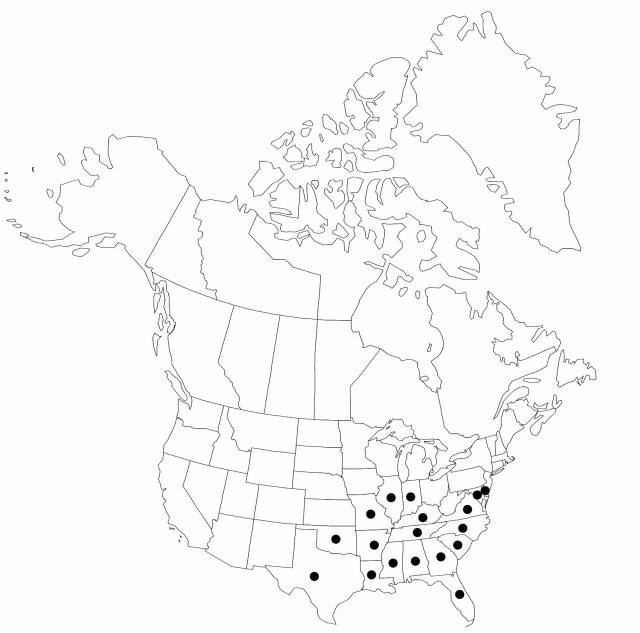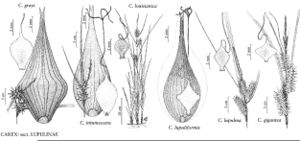Carex gigantea
Trans. Linn. Soc. London 7: 99, plate 10, fig. 2. 1804.
Plants loosely cespitose or not, long-rhizomatous. Culms solitary or not, erect, 35–120 cm. Leaves 4–8; basal sheaths reddish to brownish; sheath of distal leaf 5–20 cm; ligules triangular, 4.5–35 mm; blades 20–60 cm × 5–16 mm. Inflorescences 15–40 cm; peduncles of basal 2 pistillate spikes 5–20 cm apart; of terminal 3–8 cm shorter than to somewhat exceeding the distal pistillate spike; bracts leafy, sheath 0.5–5 cm, blades 30–60 cm × 6–11 mm. Spikes: proximal pistillate spikes 2–5 per culm, ± separate, 20–75-flowered, cylindric, 3–8 × 2–3 cm; terminal staminate spikes 1–5, 2–8 cm × 2–4 mm. Pistillate scales 3–5-veined, lanceolate to lanceolate-ovate, 4.5–10.5 × 1.5–2 mm. Anthers 3, 2.8–5 mm. Perigynia stiffly spreading at right angles to rachis, lanceoloid to lance-ovoid, 11–18 × 4–6 mm, shiny, glabrous; beak conic, 6–9 mm. Achenes broadly stipitate, obconic with rounded to truncate summit and concave faces, angles strongly thickened, 2.2–2.6 × 2.7–3 mm; style same texture as achene.
Phenology: Fruiting late spring–early summer.
Habitat: Wet swamp forests, forest openings, open swamps
Elevation: 0–400 m
Distribution

Ala., Ark., Del., Fla., Ga., Ill., Ind., Ky., La., Md., Miss., Mo., N.C., Okla., S.C., Tenn., Tex., Va.
Discussion
Selected References
None.
